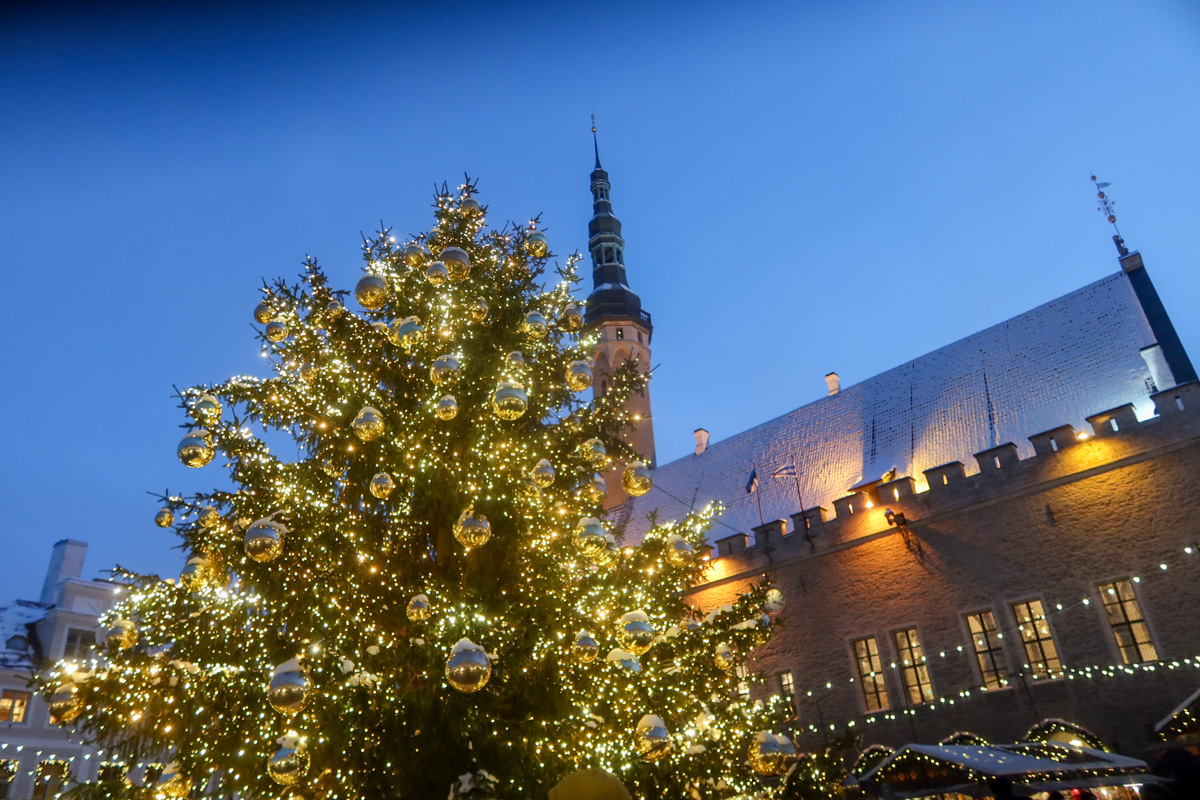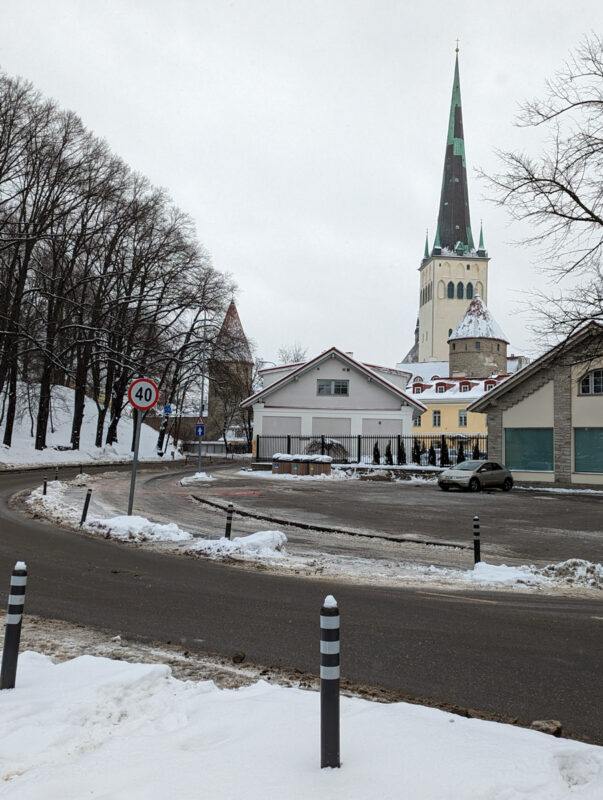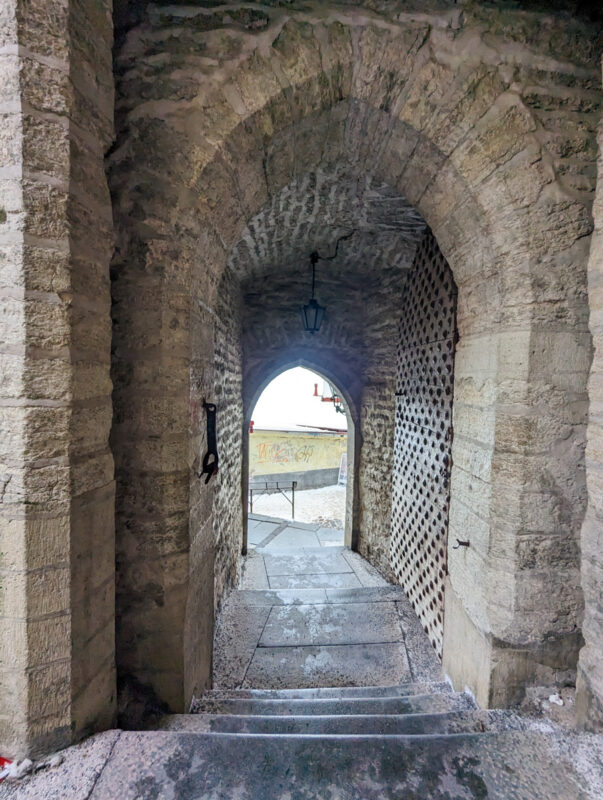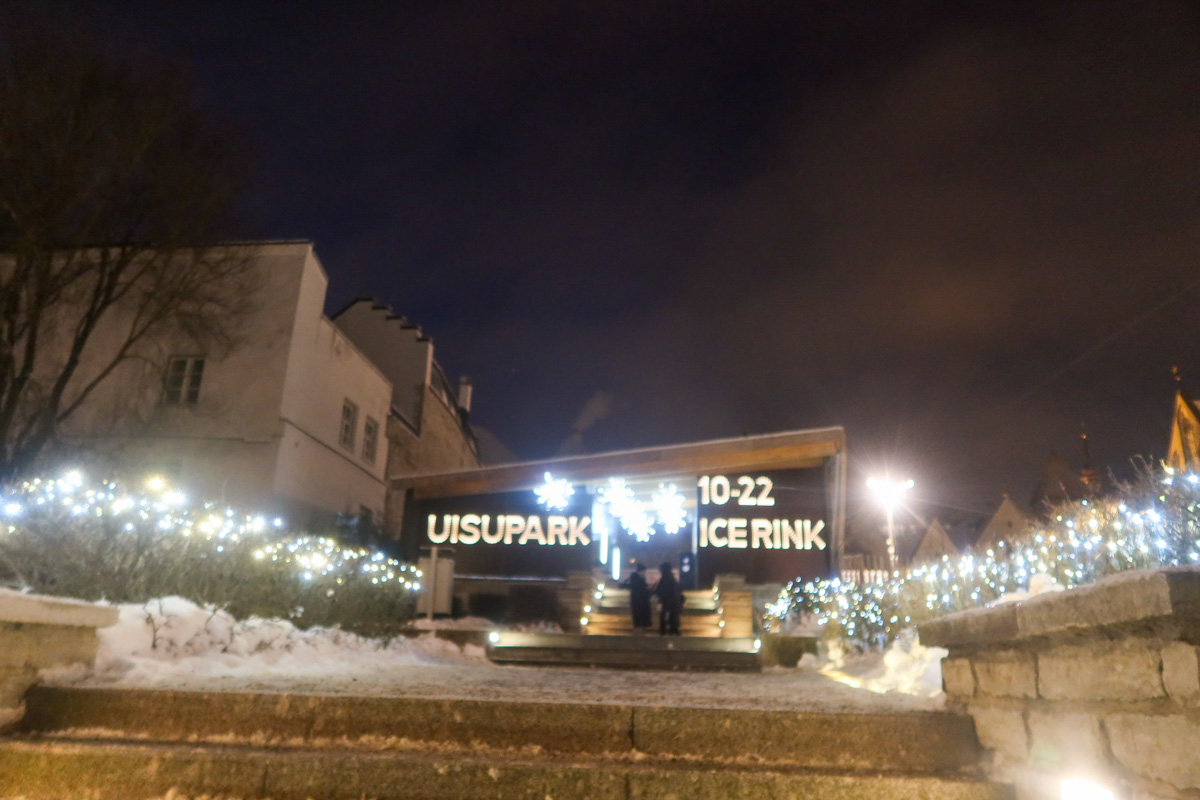Does it snow in Tallinn? Most certainly!
However, climate change has affected snow patterns a little.
It was very snowy when I was in Tallinn in December 2023, and I spent some time discussing snowfall in the city with a few locals.
So, here’s all you need to know about snow in the capital of Estonia!
Does it Snow in Tallinn?
Yes, Tallinn is one of the snowiest cities in Europe.
The city, known for its beautiful medieval architecture and coastal location, typically sees snowfall starting from November (sometimes even late October) and continuing through to March, with a few late-season snow showers in April.
The intensity and duration of the snow can vary from year to year, but winters in Tallinn are generally characterised by a consistent covering of snow.
How often does it snow in Tallinn?

Snow in Tallinn is frequent during the winter months.
The city usually experiences its first snowfall in November – sometimes as early as late October.
Snowfall continues intermittently throughout the winter, with January and February often being the peak months for both the frequency and intensity of snow.
When does it snow in Tallinn?

Snowfall in Tallinn varies each month during the winter, with each period offering a different aspect of the city’s snowy charm.
Does it snow in Tallinn in October?
It’s possible to see the first snowy showers or sub-zero temperatures in late October, but there’s usually not much accumulation until November.
Does it snow in Tallinn in November?
In November, the first signs of winter start to show, and the city begins its transition into the colder, snowier months ahead.
By the end of the month, significant snow accumulation is possible.
Does it Snow in Tallinn in December?
December sees a more consistent snowfall in Tallinn.
This is when the city truly begins to embrace the winter season.
The snow transforms Tallinn into a picturesque scene, perfectly complementing the festive decorations and Christmas markets that start to spring up around the city.
Does it Snow in Tallinn in January?
January is often the peak of winter in Tallinn.
It’s the month when you can expect the most frequent and heaviest snowfall.
The snow during this time is typically at its deepest, blanketing the city in white.
Does it Snow in Tallinn in February?
Snowfall continues well into February, though it can start to taper off towards the end of the month.
Despite this gradual decrease, the city often remains cloaked in snow.
Does it Snow in Tallinn in March?
By March, the intensity of snowfall in Tallinn begins to lessen, and it becomes less frequent.
However, the start of the month can still feel very wintery, with plenty of snow on the ground and frequent snow showers.
Does it Snow in Tallinn in April?
While it’s less common, snowfall in Tallinn can extend into April.
This is usually light and doesn’t last long as the temperatures begin to rise.
Why does it snow in Tallinn?

The snowfall in Tallinn is a result of a unique blend of geographical and climatic factors, deeply influenced by its location and the surrounding environment.
As the capital of Estonia, Tallinn’s winter weather, particularly its snow patterns, is shaped by its northern latitude and proximity to the Baltic Sea.
Tallinn’s position in the northern part of Europe is a primary reason for its long and cold winters.
Being at a higher latitude means that the city experiences lower temperatures during the winter months, creating ideal conditions for snow.
This northern location ensures that the winter season in Tallinn is not only marked by its duration but also by the regularity of its snowfall.
Additionally, Tallinn’s proximity to the Baltic Sea plays a significant role in its winter climate.
The sea acts as a massive reservoir of moisture, which is a critical ingredient for snow. When cold air, especially from the Arctic regions, sweeps over the city, it meets the moist air from the sea.
This interaction often results in the formation of snow clouds, leading to frequent snowfall in Tallinn.
However, the maritime influence of the Baltic Sea can also lead to milder temperatures compared to other regions at similar latitudes.
This means that while the sea provides the moisture necessary for snow, it also prevents the temperatures from dropping too low.
Consequently, the snow in Tallinn is often wetter and heavier, and the winter, while cold enough for snow, is not as harsh as it could be in a more continental climate.
Moreover, weather patterns from the north, particularly those originating in the Arctic, significantly influence Tallinn’s winter weather.
These patterns bring very cold air into the region, which, when colliding with the moist air from the Baltic Sea, enhances the snowfall in the city.
Recent heavy snowfall in Tallinn

There are a few excellent real-world examples of heavy snowfall in Tallinn.
A particularly memorable instance occurred in November 2023, as reported by the Environment Agency and detailed on ERR News.
The agency issued a “dangerous” weather warning across Estonia due to forecasts of heavy snow and sleet.
The event unfolded over several days, starting on the evening of Wednesday, November 22, when heavy snow, sleet, and snowstorms hit the western islands of Estonia.
Accompanying these conditions were strong winds, which reached speeds of up to 15 meters per second inland and even more powerful gusts along the coast and on the islands, peaking at 25 meters per second.
By Thursday, November 23, this weather system had expanded across the country, bringing blizzards to the mainland. The snowfall during this period was significant, with accumulations expected to be between 7 to 12 centimeters across most regions and up to 15 centimeters in southern Estonia.
The situation on Thursday morning was particularly challenging in eastern Estonia, where the snowstorm persisted. In contrast, western parts of the country saw the snow turning into rain, leading to a risk of glazed ice and making road conditions treacherous.
This weather event was serious enough to warrant a level two weather warning for both November 22 and 23.
A level two warning indicates “dangerous” conditions, prompting the Environment Agency to advise people to be extremely vigilant, stay informed about the weather forecast, and follow any guidance issued by authorities.
The warning emphasized the importance of being aware of unavoidable risks and adhering to official advice during such severe weather conditions.
Events like this highlight the potential severity of winter weather in Tallinn and the broader Estonian region, underscoring the importance of preparedness and caution during heavy snowfall and related hazardous conditions.
My tour guide in Estonia also told me that the temperature in November 2022 plummeted down to a whopping -28°C. But despite the frigid conditions, she still layered up and did walking tours!
What’s it like when it snows in Tallinn?

Snowfall in Tallinn transforms the city.
The city’s Old Town, a UNESCO World Heritage site, becomes particularly enthralling with its historic buildings and cobblestone streets blanketed in snow.
The medieval structures, with their steep roofs and tall spires, take on a storybook quality.
Landmarks like Toompea Castle, Alexander Nevsky Cathedral, and the Town Hall Square are especially stunning.
The environment in Tallinn during snowfall is serene and peaceful.
The usual city sounds are muffled by the snow, and there’s a calmness that pervades the streets. Parks like Kadriorg and the seaside district of Pirita boast tranquil snowy landscapes, ideal for leisurely walks.
Despite the cold, the city doesn’t slow down; cafes and restaurants become cosy havens, offering warm respite with hot drinks and traditional Estonian cuisine.
Because Estonians are so used to snowy weather, life carries on more or less as normal. Public transport usually runs without a hitch and businesses stay open.
Tips for Visiting Tallinn in the Snow

Here are some tips for visiting Tallinn in the snow:
- Dress Appropriately: Estonian winters are cold, so dressing in layers is essential. A waterproof and insulated coat, thermal underlayers, a hat, gloves, and waterproof boots with good grip are crucial to stay warm and dry.
- Stay Informed About the Weather: The Estonian Meteorological and Hydrological Institute provides up-to-date weather forecasts. Regularly check their website for the latest weather updates in Tallinn.
- Transport: While public transport in Tallinn is reliable, snow can occasionally cause delays. Plan extra time for travel and consider using the city’s extensive public transport network, which includes buses, trams, and trolleys.
- Walking Safely: Be cautious on snowy and icy paths. The city works hard to clear major walkways, but less frequented paths may be slippery. Wear shoes with good traction and be mindful of your surroundings.
- Enjoy Winter Activities: Embrace the winter by exploring outdoor activities like skating at the Harju Street ice rink or taking a winter walk in one of the many parks.
- Explore Indoor Attractions: For colder days, Tallinn offers many indoor attractions such as museums, galleries, and historic churches. Places like the Kumu Art Museum and the Seaplane Harbour offer insightful and warm indoor experiences.
- Emergency Contacts: In case of any weather-related emergencies, it’s good to have contact information for local authorities. The Estonian emergency number is 112.
Things to do in Tallinn in the snow

When Tallinn is covered in snow, the city encompasses a variety of activities that cater to both the love for the outdoors and the desire for cosy indoor experiences.
The enchanting snowy landscape of Tallinn, coupled with its rich history and culture, is a unique setting for a multitude of winter activities.
For those who enjoy the outdoors, exploring Tallinn’s Old Town is a must.
The historic area, with its medieval architecture, transforms under the snow into a scene reminiscent of a fairy tale.
Walking through these snow-covered streets allows you to appreciate the beauty of the city’s past in a serene, almost magical setting. Explore independently, or take the Tallinn in a Nutshell walking tour.
Kadriorg Park is a perfect destination if you’re looking for a peaceful stroll amidst the beauty of winter.
Fancy something more active? Try ice skating!
The outdoor rink at Harju Street provides not just an opportunity for skating but also a chance to enjoy the beautiful winter backdrop of the city.
It’s an ideal way to embrace the winter spirit while enjoying some physical activity.
On colder days, or if you prefer indoor activities, Tallinn has a range of museums. The Kumu Art Museum, known as one of the largest art museums in the Baltic region, is worth a visit. I also found the Tallinn City Museum to be very interesting.
FAQs about snow in Tallinn
Here are some answers to frequently asked questions about snowfall in Tallinn!
How often does it snow in Tallinn?
Tallinn sees snowfall quite frequently during the winter months, particularly from December through February.
Snow can start as early as November and last until March.
Does Estonia get a lot of snow?
Yes, Estonia generally receives a significant amount of snow during the winter, especially in the inland areas.
The coastal regions, including Tallinn, also witness considerable snowfall, though the proximity to the sea can sometimes result in slightly milder conditions.
Does it snow in Tallinn at Christmas?
While it’s not guaranteed, there’s a good chance of snow in Tallinn around Christmas, as it’s in the heart of the winter season. It’s well worth visiting the city for the Tallinn Christmas Market, too!
What is the snowiest city in Estonia?
Otepää, located in southern Estonia, is often considered one of the snowiest places in the country. It’s a popular winter sports destination and typically receives more snow than coastal cities like Tallinn.
Is Tallinn colder than Stockholm?
Tallinn and Stockholm have relatively similar winter temperatures.
However, due to its slightly more eastern location and continental climate influences, Tallinn can sometimes experience colder snaps than Stockholm.
What to wear in Tallinn in Winter?
In winter, it’s essential to dress warmly in Tallinn!
This includes wearing layers, a waterproof and insulated coat, thermal underclothes, a hat, gloves, and waterproof boots with good grip for snowy and icy conditions.
Tallinn snowfall: it’s very common!
Now you know all about snowfall in Tallinn! It’s very common, although of course, never guaranteed.
Take a look at my YouTube video to see just how freezing it can be here in the cooler months:

